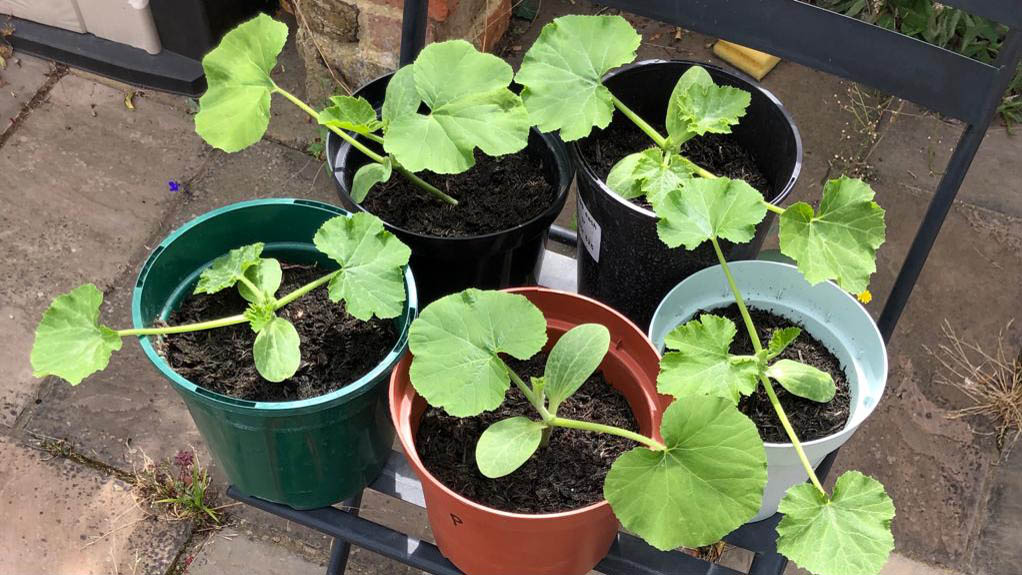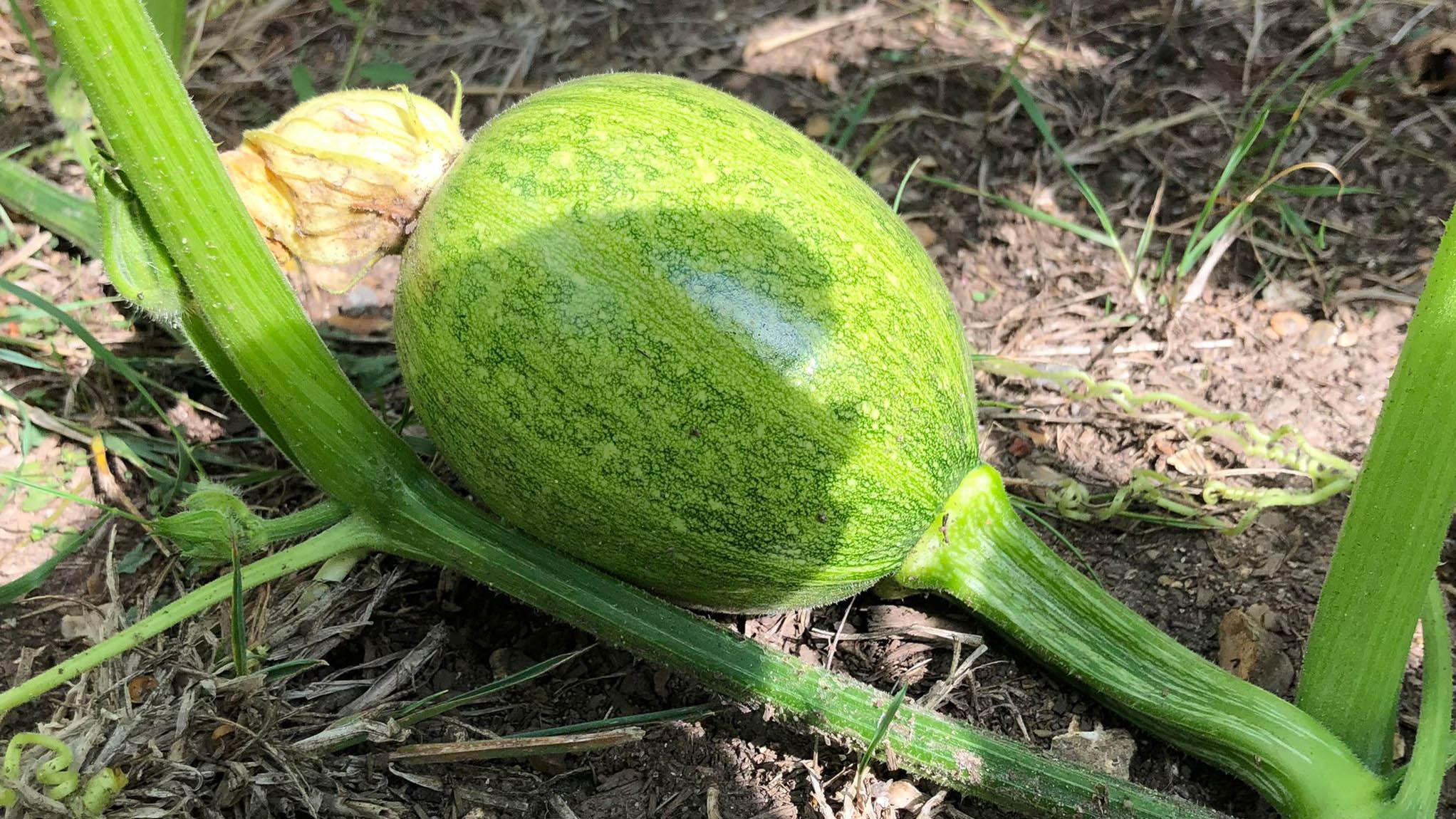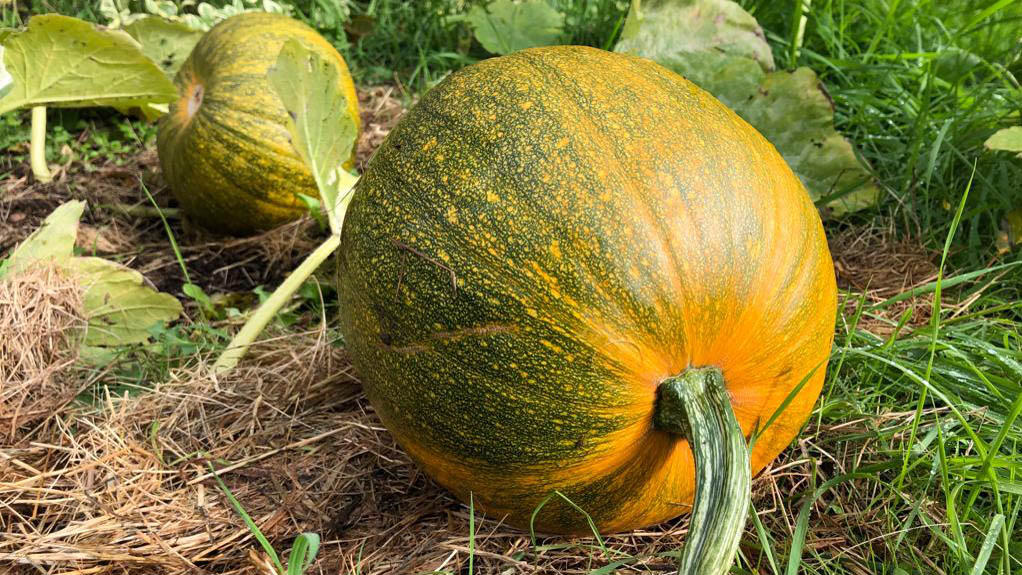My sister grew her own pumpkins for Halloween — and the results were huge
Here’s what happened when my sister decided to grow pumpkins

Halloween is just around the corner, and that means families everywhere are readying the costumes and decorations, not to mention venturing out to pick their very own pumpkins. But, have you ever stopped to wonder what goes into growing these pumpkins? Or how easy it might be to take on this task yourself?
My sister can tell you what it’s like first hand, having grown her very own jack-o-lantern pumpkins over the last 4 months.
This task had its ups and downs, but growing these fruits (yes, they’re fruits) is much simpler than you’d think. Here’s what happened when my sister decided to propagate pumpkins, and what she’s learnt from the experience.
If you’ve already carved out your pumpkin, make sure you don’t waste any of it, here are 6 things you can do with pumpkin guts and seeds.
Why grow pumpkins?
My sister actually decided to grow pumpkins when she was sent some seeds for free in the mail as part of a gardening competition. That’s right, there was no drive to have her own home-grown Halloween pumpkins — she simply didn’t want to see these seeds, or the zucchini seeds which were sent alongside, go to waste. But, nevertheless, her interest was piqued, and she was keen to see what would happen.

The growing process
To start with, the seeds were planted into some small compostable seedling cups which were also supplied. These sat on the kitchen windowsill, although this didn’t last for long as they grew very quickly with regular watering. In less than a month these now leafy plants needed to be moved outside into bigger pots. My sister was initially shocked by how much water they needed, but it was quite enthralling to see something grow so fast.

Pumpkins can’t be grown just anywhere though — my sister needed an aptly sized vegetable patch for them for the next stage. She ordered a 200 liter flat pack vegetable box from Amazon, a bit like the Patiomore 8 Feet Outdoor Wooden Garden Bed Planter Box Kit ($49.99, Amazon), and marked out a space for it in her yard.
Get instant access to breaking news, the hottest reviews, great deals and helpful tips.
The box needed to be lined with a black permeable liner and filled with about 6-7 bags of compost along with 2 bags of manure. While this was quite a lot of work for my sister and no small expense, she does appreciate that she now has an available vegetable patch for year on year crops, and it would only require fresh compost moving forward.
She grew Marigolds and Nasturtiums in her vegetable box alongside the pumpkins because they’re good companion plants. These help catch and deter pests such as white flies and caterpillars.

Once the pumpkin plants were moved into the vegetable box, they bloomed within a month, which my sister felt made for quite a pretty display. Both male and female versions of these beautiful orange starfish-shaped flowers appeared, but the females needed to be fertilized quickly as they would wilt and die within a day. Some people actually hand-pollinate their pumpkin flowers because of this. My sister didn’t go this far, although she removed some of the wilted leaves so the bees could still access the flower.
Some flowers were unfertilized — they turned yellow and died. But, to my sisters' delight, some were indeed fertilized and all too soon four pumpkins began to grow. She added hay at this point to keep the pumpkins away from moisture on the ground as well as to improve air circulation. While the hay did build up some moisture over time, she found that she could just exchange this for fresh hay and dry out the old batch before exchanging again. So it wasn’t necessary to keep buying fresh hay.

It took just under four months from start to finish for the pumpkins to grow. However, to my sister's frustration, her pumpkins were sadly harvested prematurely when the gardener accidently cut through the vines while mowing the lawn. Thankfully, her pumpkins were in the final stages, but this goes to show how easily accidents can happen, and how much heartbreak it can cause when it’s only a small harvest.
How much attention did they need?
While the pumpkins did need a lot of water as they grew — they literally needed to be watered every other day in the full heat of summer — my sister found she could leave them to themselves for the most part. She also used liquid fertilizer as she watered them to help promote the growth.
You can train them to go where you want, so she kept them neat and tidy — growing in one direction, by moving them every so often. The roots actually grow along the vine from the nodes into the ground, so this step is important, because once they’re rooted, they’re difficult to move. Bear in mind you’re only likely to get one large or two to three smaller pumpkins per plant.

My sister used a pair of the best pruning shears to prune back the leaves once the pumpkins had formed and needed to orange. Otherwise, relatively little maintenance was involved. It should be mentioned that you should also gently rotate pumpkins as they mature as well, which my sister soon found out.
Problems along the way
This was my sister’s first time growing pumpkins, so she didn’t realize you should turn them gently to give them even access to the sun. As a result, the largest pumpkin started to orange prematurely on the side facing the ground, and because of its weight, it started to flatten as well. She managed to rectify this in time, but bear in mind you need to be careful as you turn pumpkins because you can twist them right off the vine.

She also had issues with squirrels and cats digging up the compost at first. She had to keep them away from the plants as best she could by spraying a deterrent around the exterior of the vegetable box.
Not every pumpkin was a success either. My sister also grew a much smaller fifth pumpkin — it grew to about the size of her palm. Unfortunately, the plant just didn’t have enough energy to grow this, so it eventually fell off the vine and yellowed.
She had issues with fungus developing on the leaves as well, which is only natural as you’re growing these plants in a damp atmosphere come the fall. However, she cut the leaves off the vine in the final stages anyway so that the sun could reach the pumpkins, so this didn’t cause too much of a problem.
Is it worth growing pumpkins?
Overall, my sister was very happy with the results. Who would have thought you could grow such impressive pumpkins so easily in such a short space of time, and all from the backyard? This is a task she assumed you would need a farm’s worth of space to achieve. She wishes they had time to turn more orange before the vines were cut, but still they are bound to taste delicious and carve well in time for Halloween. And four sizable pumpkins out of three plants is pretty good going for a novice pumpkin propagator.

Admittedly, she’s unsure if she will grow them again, mainly because of the impact they’ve had on her lawn. She couldn’t mow the lawn properly during this time, which meant mushrooms started to take root in areas she couldn’t cut back properly. The pumpkins also took up a lot of space — these actually spilled over the vegetable box and grew 7-8 feet in one direction in total. But, my sister admits she could have kept this more in check by pruning back as soon as the pumpkins began to grow.
While these plants don’t require a huge amount of maintenance, it’s still a lot considering the limited number of pumpkins you have to show at the end. And if things go wrong, it’s a lot of emotional turmoil to bear. The zucchini seeds, on the other hand, produced a vast number of zucchinis — there wasn’t as much as stake here if a few went awry.
However, my sister is pleased she took on the challenge and her neighbors even admire her for it. From both sides of the fence, the neighbors have been eagerly watching the progress. She plans to carve them in time for Halloween with her kids and display them proudly on her porch.
Maybe she will attempt to grow a smaller variety of pumpkin next year — perhaps sugar pumpkins so she can use them in pies. Jack-o-lantern pumpkins are not ideal if you want to grow in bulk, but they are very easy to manage.
Next: Check out how to make fake blood for Halloween!

Katie Mortram used to be a Homes Editor for Tom's Guide, where she oversaw everything from kitchen appliances to gardening tools, as well as smart home tech. Specializing in providing expert advice for cleaning and home manintenance, she now works as Household Advice Editor for Good Housekeeping.
